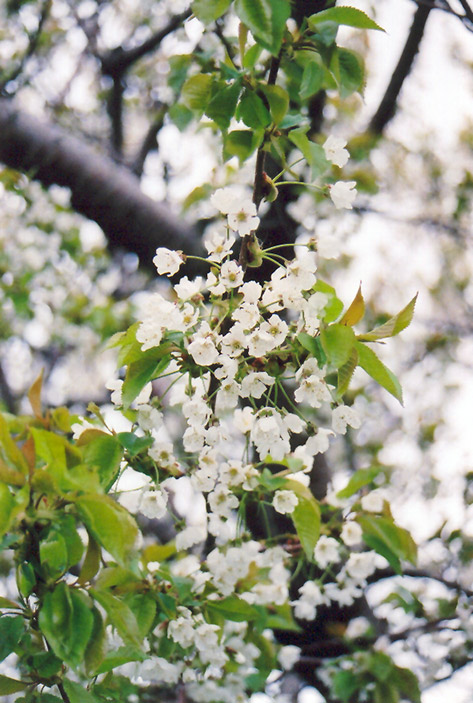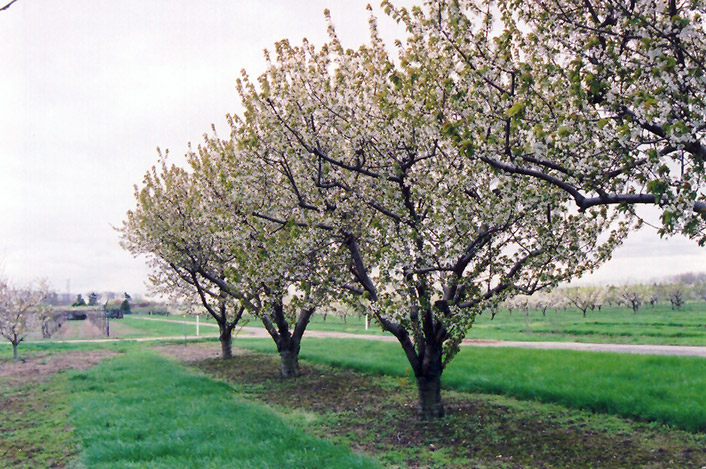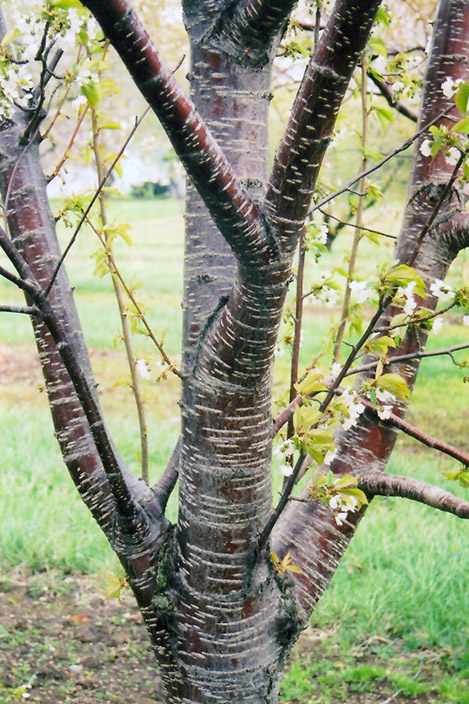Height: 40 feet Spread: 40 feet
Sunlight:
Hardiness Zone: 4 Other Names: Mazzard Cherry Description: A large upright tree absolutely smothered in very showy white flowers in spring followed by tart red cherries; best for larger landscapes; needs full sun, well drained soil and a second tree for pollination; highly attractive to birds Edible Qualities Sweet Cherry is a large tree that is typically grown for its edible qualities. It produces red round fruit (technically 'drupes') which are usually ready for picking in mid summer. Note that the fruits have hard inedible pits inside which must be removed before eating or processing. The fruits have a tart taste and a juicy texture. The fruit are most often used in the following ways: Features & Attributes Sweet Cherry is covered in stunning clusters of fragrant white flowers hanging below the branches in early spring before the leaves. It has dark green deciduous foliage. The pointy leaves turn yellow in fall. The fruits are showy red drupes carried in abundance in mid summer. The fruit can be messy if allowed to drop on the lawn or walkways, and may require occasional clean-up. The smooth dark red bark adds an interesting dimension to the landscape. This is a deciduous tree with a shapely oval form. Its average texture blends into the landscape, but can be balanced by one or two finer or coarser trees or shrubs for an effective composition. This plant will require occasional maintenance and upkeep, and is best pruned in late winter once the threat of extreme cold has passed. It is a good choice for attracting birds to your yard. Gardeners should be aware of the following characteristic(s) that may warrant special consideration; Aside from its primary use as an edible, Sweet Cherry is sutiable for the following landscape applications; Planting & Growing Sweet Cherry will grow to be about 40 feet tall at maturity, with a spread of 40 feet. It has a high canopy with a typical clearance of 6 feet from the ground, and should not be planted underneath power lines. As it matures, the lower branches of this tree can be strategically removed to create a high enough canopy to support unobstructed human traffic underneath. It grows at a medium rate, and under ideal conditions can be expected to live for 50 years or more. While it is considered to be somewhat self-pollinating, it tends to set heavier quantities of fruit with a different variety of the same species growing nearby. This tree is typically grown in a designated area of the yard because of its mature size and spread. It should only be grown in full sunlight. It does best in average to evenly moist conditions, but will not tolerate standing water. It may require supplemental watering during periods of drought or extended heat. It is not particular as to soil type or pH. It is highly tolerant of urban pollution and will even thrive in inner city environments. This species is not originally from North America. Disclaimer - This Plant Finder tool is an online resource representing many of the varieties that we carry over the course of the season, and is intended for informational purposes only. Inventory varies seasonally, so we cannot guarantee that every plant will be in stock at all times - please contact the store directly for current availability. It does not include our entire selection of plants, so be sure to visit our store to see varieties that may not be represented on this list.All Seasons Plant Finder
![]()
![]()
![]()
![]()
![]()
![]()
![]()
![]()
![]()
![]()
NetPS Page
Characteristics
Applications
Features & Attributes
Browse Our Website
Our Services
Contact Information
Phone: (337) 264-1418
Email: info@buyallseasons.com
Location: 2974 Johnston St Lafayette, LA 70503
Business Hours:
Monday-Saturday 8am-6pm •
Sunday 9am-5pm






